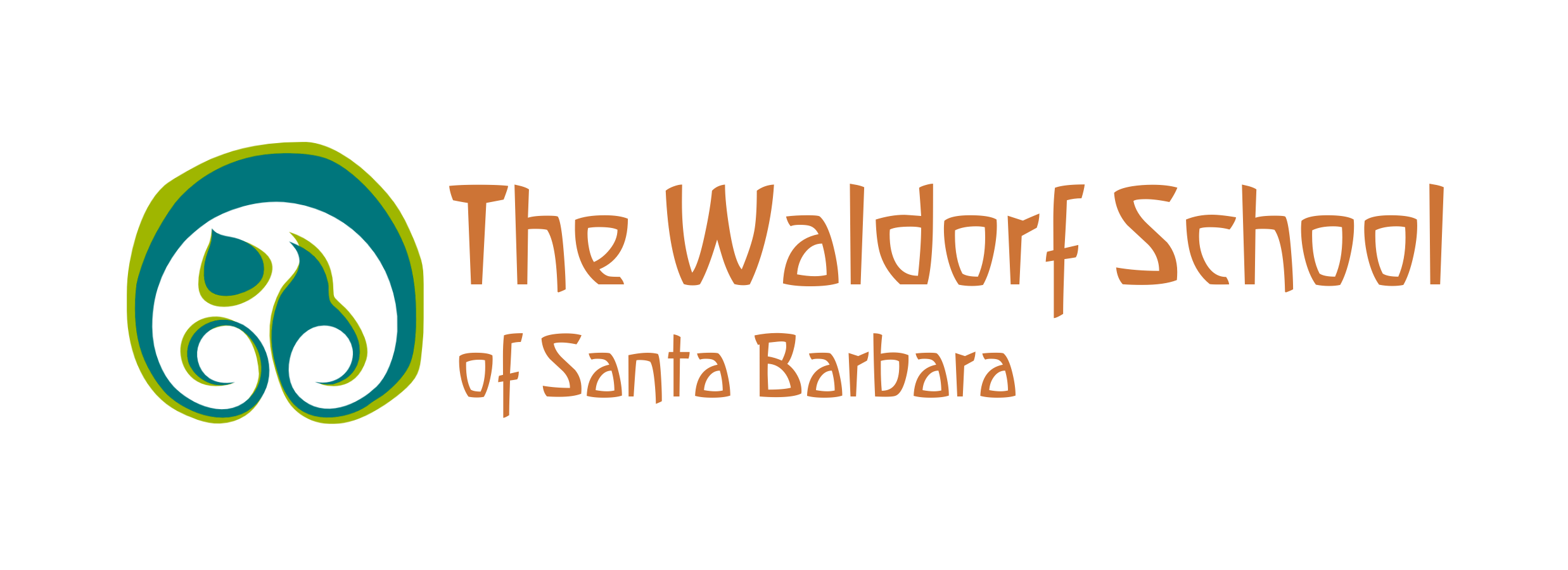The Draw of Waldorf
Dear Member of The Waldorf School of Santa Barbara Community,
David Sloan in his article “The Community Speaks” from the Spring/Summer of 2022 edition of Research Bulletin (the periodical of the Research Institute for Waldorf Education) interviews parents about what drew them to Waldorf schools. What follows is a selection of quotations from those parents:
“We want children who learn to be kind above all else. We want well-rounded children who can think critically, have love and empathy, and who learn a variety of real world practical skills (e.g. gardening, handwork, music, languages, love and respect of nature, baking, cooking, etc.).”
“We have raised many children and have experienced all manner of scholastic environments. The vibe was different. In most schools, you sense an authoritarian barrier of sorts between teachers and parents. At Waldorf you get the sense we’re in this together for the best interests of the individual child.”
“The reason I decided to send my daughter there was the fact they weren’t afraid to let the kids explore the stream and climb the hills.”
“It reminded me of my own childhood when we followed a Classical education model. I appreciated the lack of technology and the natural materials.”
“It was like I came home. It was breathtaking. It felt so inspiring. I literally cried watching the children in a math class and the way they were learning in an environment of art and beauty. I felt it a loss that I had never had the opportunity to have that experience as a child.”
“Waldorf is no/low media and recognizes that young children need nature, activity and hands-on work, not screen time.”
“We wanted our child to have a moral education with strong social ties and less media influences.”
“It felt that THIS is what education is supposed to be like. I knew that the mainstream way was not right. I could FEEL it. I knew that honoring the young child, their play and creativity was right. I knew that making school academic at a young age was wrong.”
Sloan concludes his article by sharing this comment from a Waldorf parent who is also a professor:
“I am increasingly horrified by the anxiety and generally poor preparation of my students for life, to say nothing of their stance toward learning, education, and community. Waldorf students (and teachers and parents) are impressive; they are engaging and creative, thoughtful and kind. The consumerism, media, over-stimulated culture of other children and parents drove me away from other schools, while the enlightened, meditative approach to learning, with such love and joy, drew me to Waldorf education.”
We found these quotations to be humbling and centering. They also give a sense of the many reasons parents are drawn to Waldorf education. We hope these quotations speak to you as they speak to us.
Maestra Mora plays a math game with the 8th graders during Spanish class (first photo). More learning in Spanish class with Maestra Mora (second and third photos).
Learning a foreign language is an important part of Waldorf education. Among other things, learning another language fosters in children a tolerance of and appreciation for difference.
We talked to Maestra Mora about teaching Spanish to your children here at WSSB. Here are highlights from that exchange:
What makes the Waldorf method of teaching foreign languages special is how it incorporates other cultures — their poems, songs, plays, crafts, dances, and games. By doing so the children get a taste of our vibrant and varied world, while deepening their intimacy with another language. We also explore stories. We start with fairy tales in First Grade and move on to Aztec and Mayan stories by Eighth Grade.
My favorite part of this "job"—I use the term loosely because it doesn't feel like a job—is this opportunity to immerse myself in Spanish and other cultures and then share that immersion with the children.
When I plan lessons I think about the children and how I want them to feel. I try to incorporate into my lessons a mixture of joy and sadness, fun and laughter. I want the students to remember the emotion tied to each specific topic. In class we also draw, use beeswax, act, and play games to reinforce what we've learned. It's incredible to see how the children engage with each lesson and how at once flexible and united we become.
Important Dates:
Friday, April 18th and Monday, April 20th: No school (Spring Holiday Weekend)
Wednesday, April 23rd: Rising First Grade Preview Evening at 5:30 p.m. (details forthcoming)
Friday, April 25th: Professional Development Day: No school for students (except Grade 5 for the Pentathlon)
Thursday, May 1st: May Faire and Grandparents’/Special Friends’ Day (details forthcoming)
Friday, May 16th: Hike-a-Thon (details forthcoming)
In gratitude,
The Admin Team
PS The Thought of the Day is from Norman Fischer:
“Think about how you feel when you see a group of adolescents approaching you on the street. Do you look at them with curiosity and interest? Do you move a bit closer to hear what they might be saying, to experience a little bit of their atmosphere? Or do you find yourself tensing up, bracing yourself for their approach, and trying to avoid them? Because what they have to say so often seems challenging, angry, or unclear adolescents are the last people we want to listen to, and yet they are the ones who need our listening most. And since they represent the future for all of us, it is in our best interest to do that listening.”
Thank you for supporting WSSB. Half of our families have already donated to this year’s Annual Campaign. We need six more families to give this week. Please help us reach our goal of 100% participation. No gift is too small! No gift is too large!




